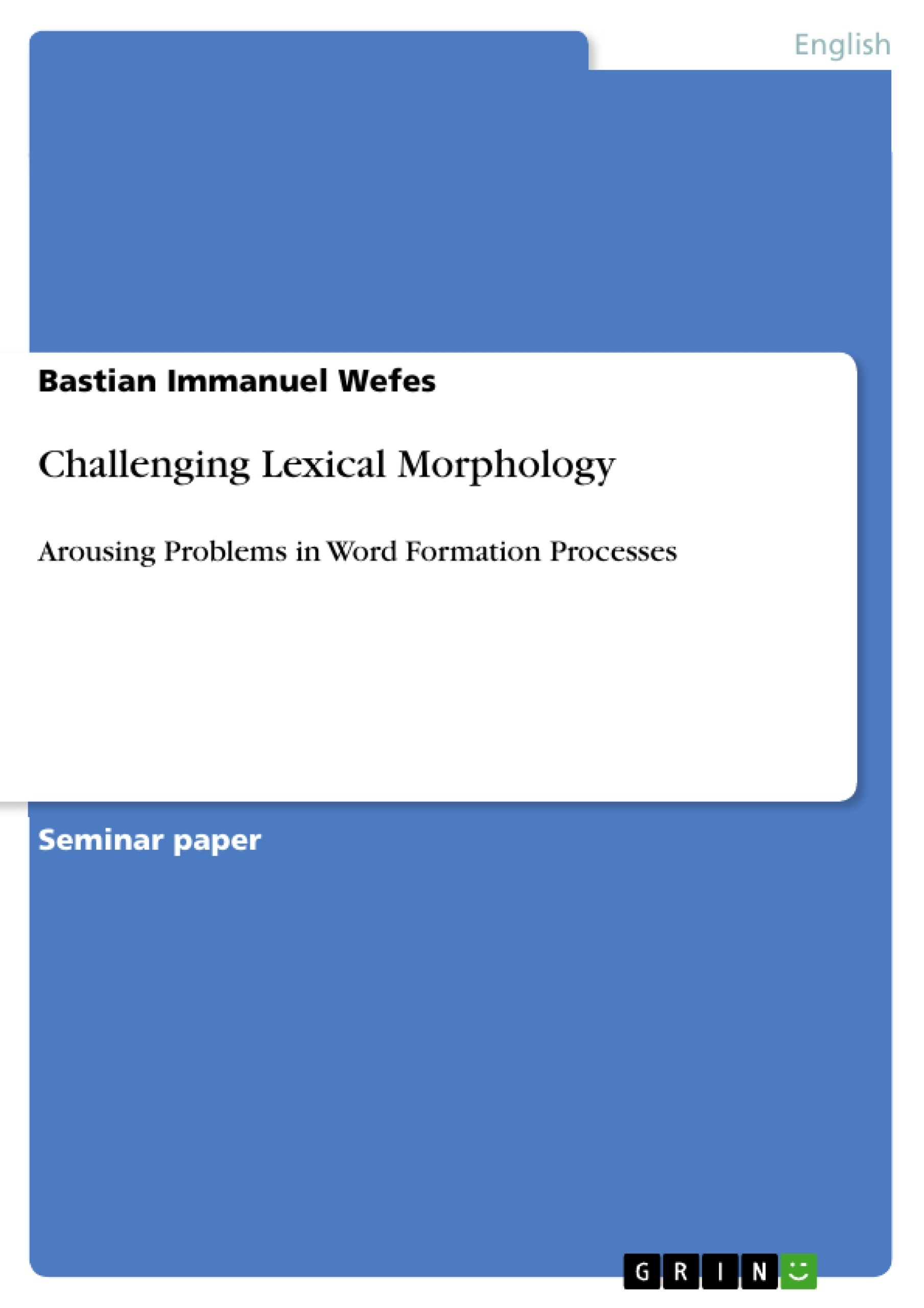In this term paper I examine several approaches to the bundling of both morphological and phonological rules, which is commonly referred to as stratification and which is the basis for the lexical morphology and phonology model. Therefore I first introduce the idea of strata with respect to their respective tasks and the order which they usually appear in (section 2). In the following I show up the first (minor) challenges within the model that eventually help to refine it (section 3). Furthermore I display problems that have not yet been solved, meaning inconsistencies within the stratification processes as they have been introduced (section 4). Right before the conclusion I briefly introduce a different approach (by Goldsmith 1990), which contradicts most of the remarks in the previous sections, but can eventually be refuted quite easily (section 5). In the conclusion I point out that the lexical morphology and phonology model has its problems (like probably nearly any other linguistic theory), but is most likely to be the most appropriate model for this motivation.
Inhaltsverzeichnis (Table of Contents)
- Introduction
- Word formation processes and lexical strata
- Introducing affixes
- Introducing lexical strata
- Prefixes
- Assignments of lexical strata
- Productivity and irregular inflection at stratum 1
- Regular inflection at stratum 2
- The order of strata to apply
- The refinement of the lexical phonology and morphology model
- Blocking, lexical integrity and the Elsewhere Condition
- Compounding
- The order of processes within strata
- The amount of required strata
- The most prominent approaches
- The Strict Cycle Condition
- Step-by-step confrontation
- Yet unsolvable problems within the model
- "Multi-stratum" affixes
- Lexical strata and bracketing paradoxes
- The counter approach: roots as determinants for lexical strata
- Conclusion
Zielsetzung und Themenschwerpunkte (Objectives and Key Themes)
This term paper aims to analyze various approaches to the distinction of morphological and phonological rules based on affixes, focusing on the problems that arise within these models. The paper explores the categorization of affixes and their modes of operation, examines exceptions to these rules, and investigates the compatibility of phonological and morphological rules within the proposed frameworks.
- The categorization of affixes and their roles in word formation.
- The challenges and inconsistencies within models of lexical phonology and morphology.
- The application of the Elsewhere Condition and the Strict Cycle Condition.
- The debate surrounding the existence of “multi-stratum” affixes and bracketing paradoxes.
- Alternative approaches to the organization of lexical strata.
Zusammenfassung der Kapitel (Chapter Summaries)
- Introduction: This chapter discusses the vastness of the English language and its numerous word forms, highlighting the human brain’s ability to understand even unfamiliar words based on their relation to other words. It emphasizes the role of affixes in modifying a word's meaning, number, and category, using the example of the suffix -al and its impact on the word "nation."
- Word formation processes and lexical strata: This chapter delves into the concept of lexical strata and how they function in word formation. It introduces the idea of assigning affixes to different strata based on their productivity and the type of inflection they trigger. The chapter explores the distinction between irregular and regular inflection and the order in which strata are applied.
- The refinement of the lexical phonology and morphology model: This chapter examines refinements to the model, including the concepts of blocking, lexical integrity, and the Elsewhere Condition. It further discusses the challenges of incorporating compounding into the model and explores the order of processes within strata and the necessary number of strata.
- Yet unsolvable problems within the model: This chapter addresses remaining issues within the model, such as the existence of "multi-stratum" affixes and the problem of bracketing paradoxes. These issues highlight the ongoing challenges and complexities in understanding the interactions of morphological and phonological rules.
- The counter approach: roots as determinants for lexical strata: This chapter briefly introduces an alternative approach proposed by Goldsmith (1990), where roots, rather than affixes, determine the lexical strata. This alternative perspective offers a contrasting perspective on the organization of lexical strata and raises further questions about the validity of existing models.
Schlüsselwörter (Keywords)
This paper focuses on the lexical morphology and phonology model, exploring the challenges and inconsistencies within this framework. Key terms include lexical strata, affixes, productivity, inflection, blocking, lexical integrity, the Elsewhere Condition, the Strict Cycle Condition, bracketing paradoxes, and compounding. The paper also considers the role of roots in determining lexical strata.
- Citar trabajo
- Bastian Immanuel Wefes (Autor), 2012, Challenging Lexical Morphology, Múnich, GRIN Verlag, https://www.grin.com/document/201481




